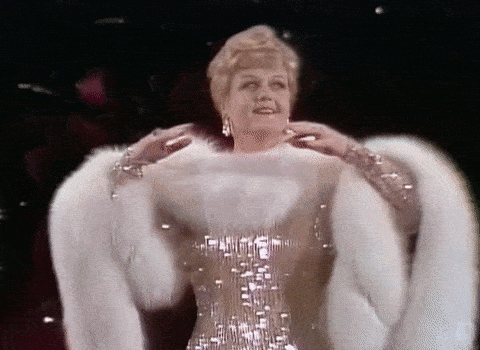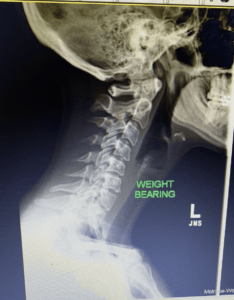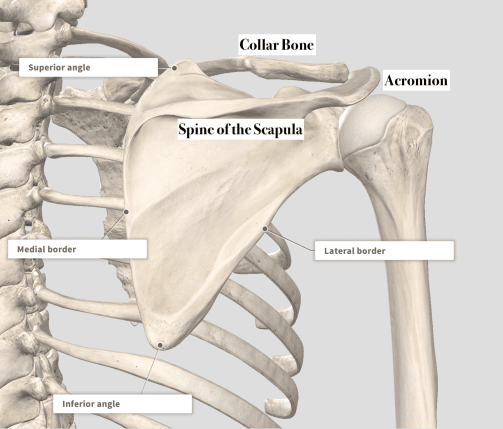Let’s Get Personal
I want to share a story about a time I experienced pain and discomfort in my neck and shoulders, and how I was able to move out of it. I know we all experience pain differently, and that pain is very emotionally and physically draining. Maybe my personal story will provide some insight for you. My hope is that it does.
The Lead Up
There were several compounding factors of why I experienced pain in my neck and shoulders, more specifically my upper traps — pain and discomfort that lasted years, or was it a decade? It’s hard to remember now.
First, there was the whiplash I sustained when I was nineteen. At the time, I didn’t do anything about it because I didn’t have health insurance. This led to a year-long headache, that I explored when I had health insurance again.
My doctor ruled out a tumor by sending me for a CT scan. Then I was prescribed physical therapy, where I was told I had some serious forward head posture and I needed to learn to stand up straight. The PT gave me exercises like the chin tuck to strengthen my upper back: all pretty standard treatment for my condition.
The exercises helped a little, but I still got a headache almost daily. Then I was referred to a chiropractor. After my first session, my headache went away. It was a miracle!

Of course it didn’t last, but it felt great to finally have a few days without a headache.
Continued Care

I sought chiropractic care for many years to help with my neck pain where I learned that the whiplash had seriously changed my cervical spine. A few years later I was told I had degenerative arthritis in my neck (see photo).
Fun times.
I had massage therapy and chiropractic treatment nearly weekly — for years— and though it felt better, the relief never lasted.
Over time I went less and less often: it wasn’t financially sustainable on a weekly or even a monthly basis for me, and it was difficult to find quality chiropractors and massage therapists in the places I was living.
The Things That Did Help Me
Chiropractic care helped end that year-long, every-day headache, which was great. And combined with massage therapy and work on my posture, my upper traps also felt much improved, but not discomfort free. They still felt pretty tense often enough.
But first, Back Story
In 2010 my spouse, Mike, sustained a career-altering injury, and our focus on how to recover to get back to circus arts and flying trapeze became the main focus of our search for the best shoulder specialists in the industry.
The search took about two years and involved a lot of learning of what was out there and which practitioners were good, and which were not. Eventually it led to a consultation with Eric Cressey.
After Mike’s good experience with Eric, I met with him as well. Here I learned that my shoulder blades sat too low on my rib cage. They were in a constant state of depression, meaning my upper traps were constantly being stretched out. That tension and pain I felt was caused by overstretched muscles, not shortened ones— the usual cause of muscle tension.
A New Way of Being
It was mind blowing to think my upper traps were tense because of stretched muscles. But not long after I began my rehab/strength training program, my upper traps started to feel better. This was nice and such a new experience.
The exercises I did, and some I still continue to do, were to strengthen the muscles around my shoulder blade in ways I hadn’t worked on before and asking my shoulder blades to move in ways I that went against my former training (“shoulders back and down!”).
My new program contained activation exercises in my warm up to get my shoulder blades moving (I later learned the name for this: “Scapulohumeral Rhythm”). My strength training exercises then used the muscles with that newly activated rhythm to strengthen and solidify good movement mechanics.
Exercises I Found Helpful
Quadruped Breathing or on All Fours
Think of this as the babiest of cat shapes of cat/cow. A knitting of the ribs into rib cage depression and protraction of the shoulder blades without them hiking up to your ears.
This is where my warm up begins-with breathing.
One Arm Trap Raise
This is one of those activation exercises for good shoulder mechanics. It can take a bit to “get it.” It took me a while to feel the stretch of the shoulder blade and ultimately, the upward rotation of my shoulder blade. This exercise focuses on strengthening the lower trap and the serrates muscles.
In the video demonstration below, the exercise is showing using a weight, but I started without a weight. I really focused on reaching with the arm while sensing the shoulder blade stretching, not just feeling it solely in the upper trap.
Landmine Press
I found this exercise helpful for working the upward rotation for the shoulder blade in the context of a strength training exercise.
And Then Things Changed
The whole program was slowly teaching my body to reposition where my shoulders naturally rested on the back of my rib cage. This meant that some things were also physically noticeably different. My upper traps didn’t look like a big triangle on my shoulders. It also meant that my collar bones changed their position. See the photos below, and my previous blog entry for more about this.
Before Current
How can a collarbone change positions so dramatically? It is because your collar bones are connected to the shoulder, at your acromion, the part of the front/top of the shoulder blade that sticks out a little. This is your AC joint. If you move the shoulder blades out of depression, the collar bone will naturally lift at the AC joint. (see photo below)
(Side bar: moving the shoulder blades out of depression can also help with impingement of some of the soft tissue at the top of the humerus-the upper arm bone.)

My New State of Being
Shortly after I began my training program in 2014, my upper trap discomfort went away. Today, I almost never feel that same discomfort and pain. I say “almost never” because there are times after really challenging strength training exercises that my upper traps become sore, but it’s not from being in a perpetual state of stretched out. Other times, Other soreness happens when I hunch over my laptop just a little too long, but the discomfort doesn’t last long. I check in with my posture, make sure my shoulders are in a natural place, and soon the tension goes away.
I almost never feel the need to see a massage therapist or chiropractor for muscle tension anymore. That’s not to say I don’t see these professionals every once in a while — I do go when I feel discombobulated— but it’s rare.
If there is some sort of moral of this story, it’s that through seeking out knowledgeable people, learning from them and getting stronger with proper movement mechanics, I was able to get rid of my chronic neck pain.
In my next post I will share about my hip pain journey.
I hope you found a tidbit or two that was helpful for you in this post. If you are looking for some assistance with your journey, reach out; we’re happy to assist in any way we can. If you want to work with us, we’d love to work with you. Contact us.




Pingback: Moving Out of Pain (Part 2) - Reimagym